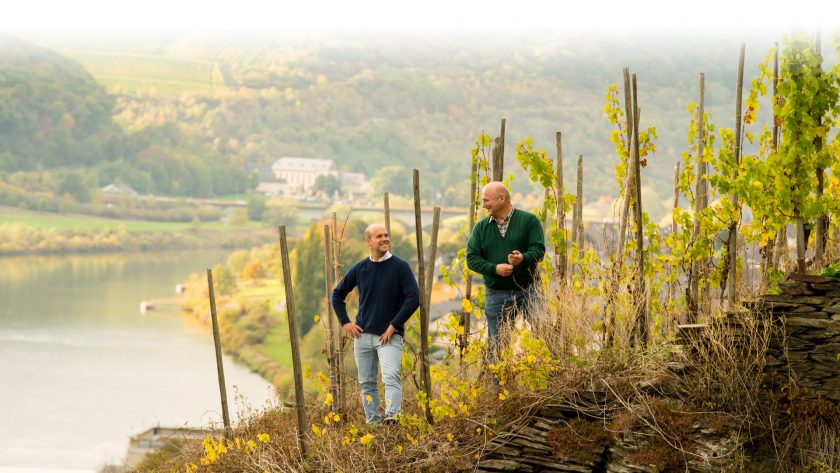Selbach-Oster
Selbach-Oster (24ha)
Zeltingen / Mosel / Germany
“Selbach-Oster might be one of the hottest domains along the Mosel, if not in all Germany.” – Stephan Reinhardt, The Wine Advocate.
Today, Johannes Selbach and his wife Barbara, with the help of son Sebastian, manage their vineyards and winery with passion and respect for the estate’s long held traditions. A substantial portion their 24 hectares of vines are on their original rootstocks, in Zeltinger, Schlossberg, and Sonnenuhr; Wehlener Sonnenuhr; and, Graacher and Bernkasteler Graben. These vineyards of weathered Devonian slate are on a steep, contiguous slope facing south-south west and represent some of the most prestigious sites in all of the Middle Mosel, in fact 85% of the Selbach’s vines are on steep slopes. The Selbach family’s heritage in the wine business dates to 1600: Selbach’s ancestors shipped wines down the Mosel in their own ships, the wine carried in oak barrels made by cooper Matthias Oster, the great-grandfather on the paternal side of the family. Thus, the winery developed as both a top estate producing some of the region’s best wine, and also as a négociant and brokerage firm, consolidating the production of smaller growers.
Johannes, like his late father Hans, has continued the use of traditional 1000 L oak fuder in his cellar, bringing in new large casks every few years. Vinification is carried out in a combination of fuder and stainless steel, in a hands-off manner with no fining, and with wild yeasts. The focus is on meticulous work in the vineyard (organic and sustainable farming) with the aim to produce and bring home perfect fruit. In 2016 Christian Vogt, winemaker at Karthauserhof for many years added even more talent to the winery.
The hallmark of the estate is 3 old parcels that Selbach-Oster harvests en-bloc; or, as single pickings, with no selections pulled from the vineyard prior to harvesting. The Rotlay (in the Zeltingen Sonnenuhr, rich in iron ore), the Schmitt (in the Zeltingen Schlossberg), and the Anrecht (in the Zeltingen Himmelreich) count amongst the very best terroir, classified in the highest categories of the 1868 vineyard classification which was started by the French and finished and published by the Prussians. Typically, Auslese is selected by successive passes through the vineyard—picking fruit for Kabinett and Spätlese first and leaving the healthiest berries on the vine to concentrate. For the en-bloc wines selection of this type is avoided, in order to maintain a holistic flavor profile that contains that of ultra-ripe grapes, optimally ripe, and of lesser-ripe ones which have the ability to reflect a complete terroir of both place and moment.
Because their approach in winemaking is minimal, Johannes and Sebastian will allow wines to ferment naturally, as slow or as complete as manifest, resulting in more dry wines in some vintages and more fruity wines in others.
- Vineyard Area: 24 hectares
- Practicing sustainable and organic viticulture
- Founded In: Mid 1800s, though the family’s heritage in wine dates back to 1600
- Annual Production: 13,300 cases
- Top Sites:
- Zeltingen – Himmelreich, Schlossberg, Sonnenuhr (all blue Devonian slate)
- Wehlen – Sonnenuhr (blue Devonian slate)
- Graach – Himmelreich, Domprobst (both blue Devonian slate with a layer of loam underneath)
- Bernkastel – Badstube, Graben (blue Devonian slate)
- Grape Varieties: 93% Riesling, 3.5% Pinot Blanc, 3% Pinot Noir, 0.5% Gewürztraminer




